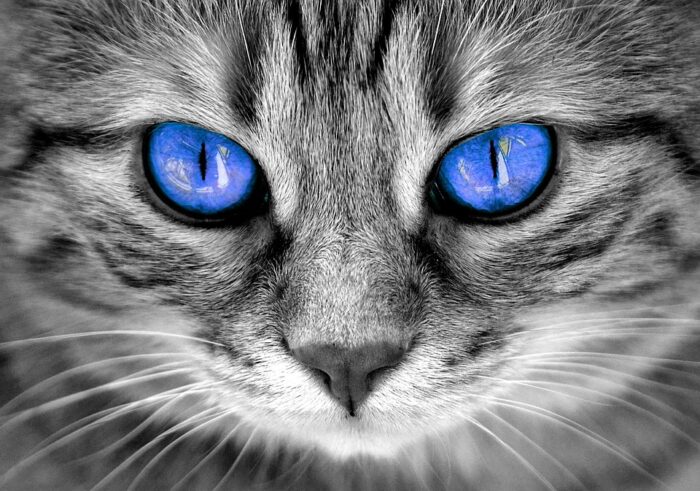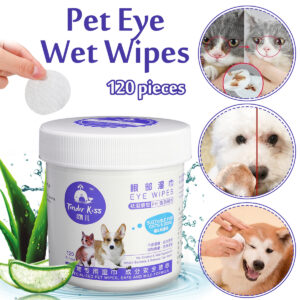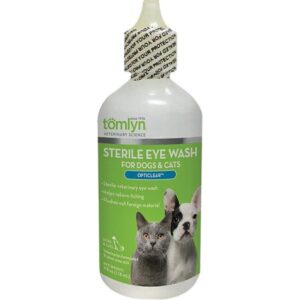Why Do Cats Eyes Water? Why is my cat’s eyes watering?
There are several reasons why a cat would have watery eyes; it could occur due to a congenital abnormality or as a result of an initial injury or eye irritation. A cat’s eyes could also become excessively watery due to allergies or if it has a foreign object trapped in the eyes. A viral infection that is akin to common could also be a reason for watery eyes in a cat. This could also cause your cat to be squinting frequently.
Watery eyes, a condition also known as Epiphora in the veterinary sphere, occurs when an abnormal and excessive overflow of tears form in a cat’s eye. This congenital condition is usually a result of a structural deformity causing an overly wide opening of the eyelids, resulting in an over-exposure of the eyeballs. Epiphora is mostly common among Himalayan, Brachycephalic and Persian breeds of cats.
Symptoms of Watery Eyes in Cats
Overproduction of tears is the initial, observable symptom of Epiphora in cats, because of the associated staining of the face, due to excessive tear drainage. Other symptoms include:
- Redness of the eyes.
- Irritation and scratching of the eyes.
- Ulceration of the cornea.
- Constant Squinting.
- Loose or sagging skin around the eye orbit.
- Eye discharge.
- Inflammation
Causes of Cat Eye Watering and Squinting
Epiphora could develop in cat’s eyes due to many reasons, including structural deformities at birth. Below are the causes of watery eyes in cats:
- Entropion in cats– A congenital disease where the eyelids are turned inwards, irritating the eyeballs. This condition may affect either the upper or lower eyelid. However, although Entropion is usually present at birth, it could also develop following an eye irritation or traumatic scarring of the eyelid, and possibly, as a result of paralysis of the facial nerve(s). Entropion can be treated with surgery which costs around $1500.
- Distichiasis – This condition is a structural abnormality which causes turned-in eyelashes, resulting in the irritation of the eyeballs. Hence, the overflow of tears.
- Eyelid Tumors – Though this is rare, it is another reason why cat’s eyes would be watery. These tumors mostly affect white cats that are without pigmented eyelids.
- Sinusitis in cats – A condition which causes swelling adjacent to the tear drainage system
- Trauma or fractures of the facial bones from accidents.
- Lodging of foreign bodies, like dust, parasite, sand, etc., into the eyes.
- Blockage of the tear duct (nasolacrimal duct) due to inflammation or as a result of a congenital disability.
- Conjunctivitis – This condition forms as scratches on portions of the face; including the conjunctiva of the eye, the nasal cavity, and eyelids.
- Glaucoma – An eye disease which damages the optic nerve; this condition is more common in older cats.
Treatment of Watery Eyes
The mode of treatment adopted for tackling watery eyes in cats will depend on the cause of the condition and its severity. The treatment options for Epiphora are:
- Administration of antihistamines to manage allergies.
- Application of pain-relieving ointments to help with the healing of conjunctivitis and trauma.
- Removal of inwards turning eyelashes (Distichiasis) through a surgical process known as Cryosurgery.
- Surgical removal of eyelid tumors.
- Surgical repair of abnormal eyelids in the case of Entropion.
- Placement of a catheter to open and drain tear from the blocked tear duct.
- Removal of foreign bodies lodged in the eyes.
- Application of topical antibiotics to treat infections.
Generally, following treatment, the duration of recovery will depend on how severe the condition is and on the type of treatment administered. Typically, after surgical procedures, recovery will usually take longer. Whereas, the healing for allergies, trauma, and infection often begins within a few days of treatment.
If your cat is suffering from watery and squinting eyes, we recommend checking out these products.



